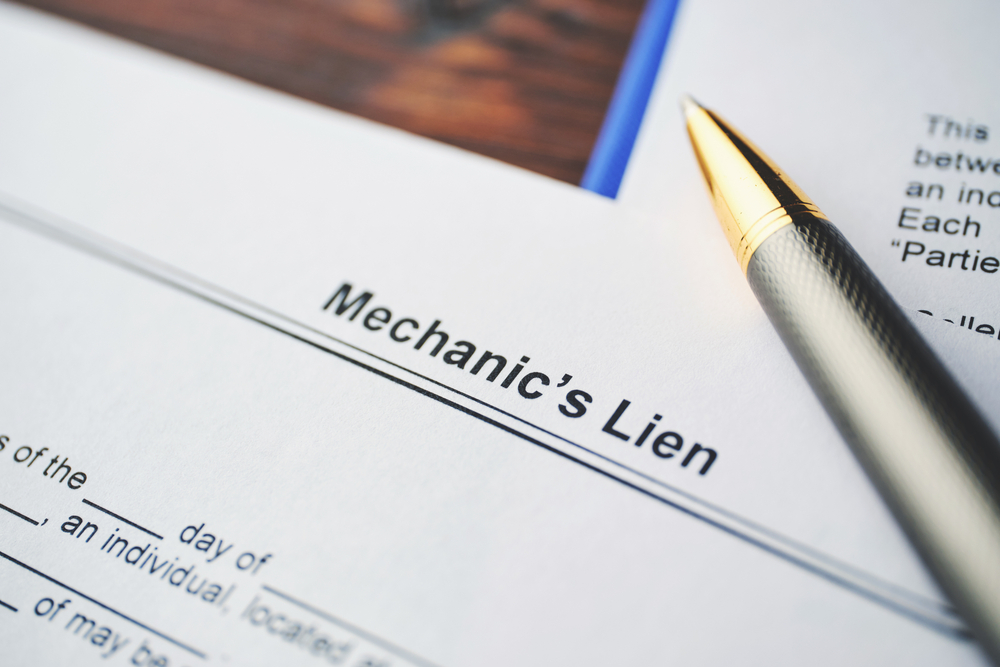

Bam. That shiny new contract for the job you’ve been bidding on just landed on your desk like a 747 full of opportunity. This could be the down payment on the house you and your spouse have been eyeing, or it could mean that you’ll finally get to drop in that 392 Hemi in your 1973 Challenger. It could. But if you don’t cover all your bases, it could just be one big headache and a loss of time. And we all know what time equals. So, let’s take a look at M&M liens.
The Texas State Bar says that the Texas Constitution:
“grants to mechanics, artisans, and materialmen a claim or interest upon the buildings and articles made or repaired by them for the value of labor done thereon or material furnished therefor. Chapter 53 of the Texas Property Code further governs mechanic’s lien rights, as it provides a detailed procedure for assertion and enforcement of a mechanic’s lien claim.”
Now that’s a lot of legal jargon just to say that when you do the work or provide the materials, the Great State of Texas wants to make sure you get paid, and they ensure that with a mechanic’s and materialmen’s lien, commonly referred to as an M&M lien.
Simply put, an M&M lien is a way to recoup loss of payment by attaching a lien to a property, making it more difficult to sell or forcing a foreclosure to pay the debt.
But don’t count your shiny new pearls just yet. Chapter 53 of the Texas Property Code is as mysteriously complicated and misunderstood as New Mexico’s Area 51-although it doesn’t need to be a black hole that sucks in your wallet…and possibly your assets.
Chapter 53 is where it gets tricky. Seeking the guidance of a knowledgeable attorney who is familiar with M&M liens will certainly save you and your team a lot of grief.
If you don’t know the ins and outs of a mechanic’s and materialmen’s lien you’ll burn your bottom line faster than you’d burn the tires on that souped-up hot rod that’s been sitting in your garage.
Obviously, materialmen and mechanics both reap the benefits of the M&M liens. A materialman is someone who supplies materials used during work performed on a property, and a mechanic is someone who has supplied labor or materials that improve the property.
But the fun doesn’t end there.
Depend on the legal team at The Cromeens Law Firm for your lien and collection needs.
The Texas Constitution says, “mechanics artisans, and material men, of every class, shall have a lien upon the building and articles made or repaired by them for the value of labor, or materials furnished; and the legislature shall provide by law for the speedy and efficient recovery of said liens.”
This means that an original contractor who is contracting directly with the owner is protected under this constitutional lien. However, it also allows for coverage of subcontractors and other similar parties.
Under the Property Code, any person who labors and specially fabricates material for construction or repair is entitled to a lien. The repair or construction can be to a house, building, property improvement, a levee, embankment, or a railroad.
Architects, engineers, or surveyors who prepare actual or planned improvements to real property also receive the benefits of a lien.
Even folks who provide certain landscaping services and materials receive protection from the M&M lien.
The purpose of the M&M lien is to secure payment for those that furnish labor or materials in connection with the construction of real property to the extent of the increased value of those improvements to the owner’s property.
Failure to do so could result in BIG LOSSES that, in some cases, have forced bankruptcies and company closures. In the end, the Lone Star State wants businesses of all sizes to be protected from corruption so that they may succeed and continue to contribute to our great communities. The M&M lien helps to secure a brighter future for you and the State of Texas.
So how do you file an M&M lien? And, more importantly, when should you file an M&M lien?
We’ll cover that and more in Part II of our series on this critical part of the Texas Property Code.
The M&M lien doesn’t have to be mystery and mayhem. The Cromeens Law Firm has on-staff, at-the-ready M&M experts to guide clients toward the best possible outcome in a timely and courteous manner. Our reputation is built on service with a smile! Contact one of our experienced attorneys today by calling (713) 715-7334 or contact us online to discuss your options. We look forward to hearing from you!
This article is intended as a general educational overview of the subject matter and is not intended to be a comprehensive survey of recent jurisprudence, nor a substitute for legal advice for a specific legal matter. If you have a legal issue, please consult an attorney.
Karalynn Cromeens is the Owner and Managing Partner of The Cromeens Law Firm, PLLC, with over 17 years of experience in construction, real estate, and business law. A published author and passionate advocate for contractors, she has dedicated her career to protecting the businesses her clients have built. Karalynn is on a mission to educate subcontractors on their legal rights, which inspired her books Quit Getting Screwed and Quit Getting Stiffed, as well as her podcast and The Subcontractor Institute.

